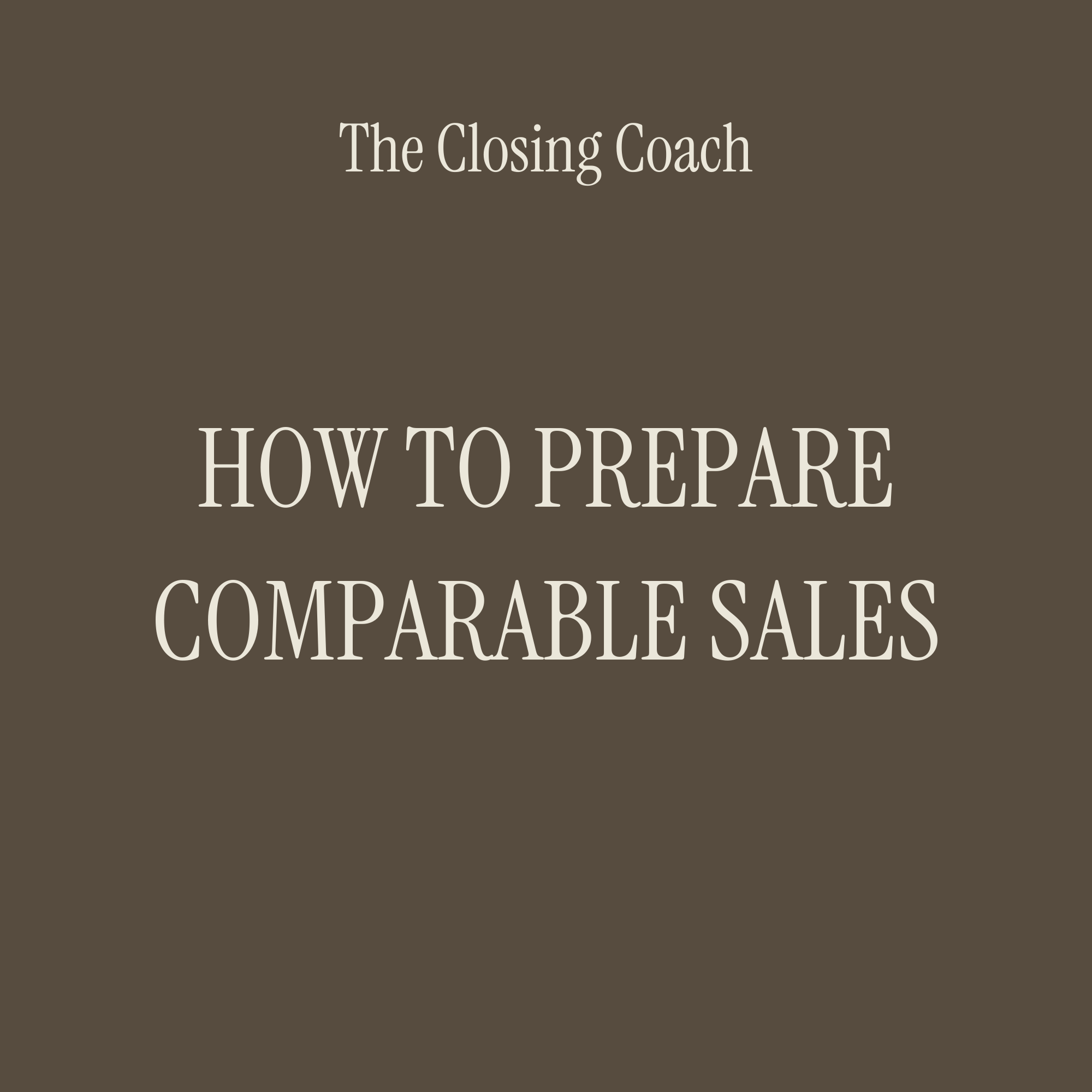Chapter 8: Writing a Winning Offer
Once you’ve navigated the disclosures, it’s time to tackle the real challenge: writing an offer that balances strategy, competitiveness, and your client’s comfort level.
Start with Comparable Sales
Comps are the foundation of every strong offer. The more properties you preview — even when you don’t have active buyers — the sharper your instincts will become. Your market knowledge is what allows you to justify your client’s offer and guide them with confidence.
Scenario 1: Multiple Offers
If a home has “a modicum of charm,” you can almost guarantee multiple offers. Remind your clients: they may not get a second chance. Sellers and listing agents typically weigh three things — price, terms, and their confidence in the buyer’s lender and agent.
Tips for navigating multiple offers:
Build strong relationships with other agents — this often sways seller decisions.
Work with a local, trusted lender (sellers avoid online-only lenders).
Expect the possibility of raising your offer by $25K–$50K to stand out.
Always follow up with the listing agent shortly after submitting your offer to see if you’re “in the mix.”
Scenario 2: Single Offer
If your buyer is the only one at the table, you have room for strategy. Ask the listing agent why the property hasn’t sold — pricing issues, lack of marketing, or condition? These insights can shape your approach.
Negotiation tips for single-offer situations:
Test the seller’s bottom line, but don’t go so low you trigger a hostile counter.
Keep negotiations short and focused. Drawn-out back-and-forths can harden a seller’s stance.
Set tight response deadlines to avoid having your offer “shopped” to others.
Contingencies: To Waive or Not to Waive?
Contingencies protect your client but can weaken their offer in competitive markets. You’ll need to help them weigh the risks of:
Loan Contingency: Trust in a great lender can make waiving this safer.
Inspection Contingency: Use your analysis of reports to give clients confidence.
Appraisal Contingency: Rarely an issue, but prepare clients for the “what if.”
Insurance Contingency: Especially important for older homes or those in risk zones.
Clauses to Watch Closely
Deposit: Varies by state; often 1–3%, higher in probate or new construction.
Liquidated Damages: Clients risk losing their deposit if they default without cause.
Arbitration & Mediation: Standard to sign — skipping them raises red flags.
Closing Date & Condition: Ensure buyers know the home must be delivered in the same condition, broom-clean, with no debris left behind.
Final Thoughts
Writing an offer is equal parts art and science. The comps and disclosures give you the numbers, but your relationships, instincts, and negotiation skills are what get your client across the finish line. Keep your clients calm, informed, and confident — and you’ll not only close deals, you’ll build lasting trust.
